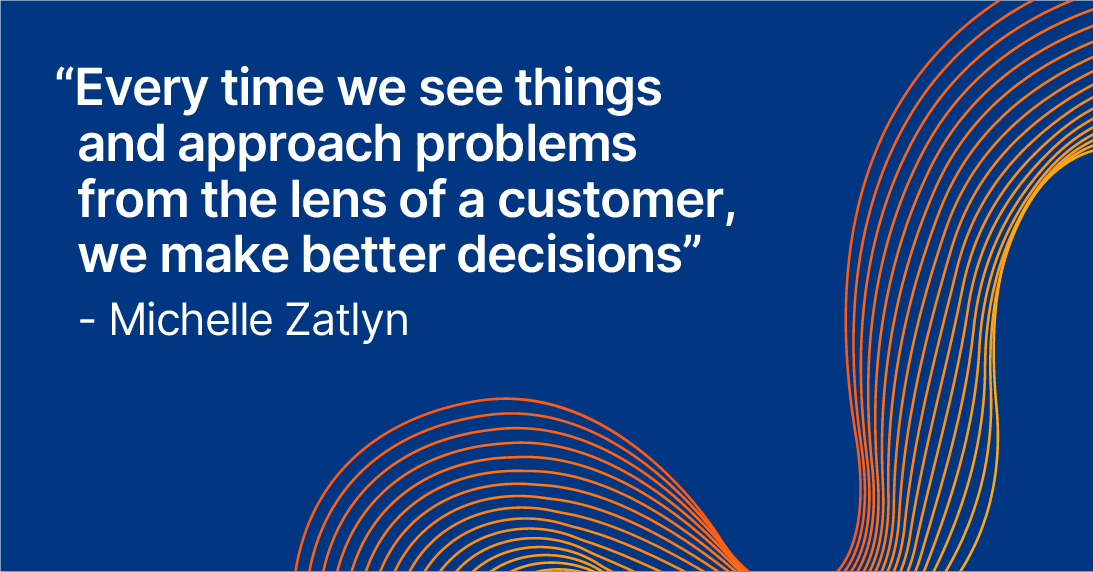Post Syndicated from Dirk-Jan van Helmond original http://blog.cloudflare.com/how-cloudflare-scaled-and-protected-eurovision-2023-voting/


2023 was the first year that non-participating countries could vote for their favorites during the Eurovision Song Contest, adding millions of additional viewers and voters to an already impressive 162 million tuning in from the participating countries. It became a truly global event with a potential for disruption from multiple sources. To prepare for anything, Cloudflare helped scale and protect the voting application, used by millions of dedicated fans around the world to choose the winner.
In this blog we will cover how once.net built their platform based.io to monitor, manage and scale the Eurovision voting application to handle all traffic using many Cloudflare services. The speed with which DNS changes made through the Cloudflare API propagate globally allowed them to scale their backend within seconds. At the same time, Cloudflare Pages was ready to serve any amount of traffic to the voting landing page so fans didn’t miss a beat. And to cap it off, by combining Cloudflare CDN, DDoS protection, WAF, and Turnstile, they made sure that attackers didn’t steal any of the limelight.
The unsung heroes
Based.io is a resilient live data platform built by the once.net team, with the capability to scale up to 400 million concurrent connected users. It’s built from the ground up for speed and performance, consisting of an observable real time graph database, networking layer, cloud functions, analytics and infrastructure orchestration. Since all system information, traffic analysis and disruptions are monitored in real time, it makes the platform instantly responsive to variable demand, which enables real time scaling of your infrastructure during spikes, outages and attacks.
Although the based.io platform on its own is currently in closed beta, it is already serving a few flagship customers in production assisted by the software and services of the once.net team. One such customer is Tally, a platform used by multiple broadcasters in Europe to add live interaction to traditional television. Over 100 live shows have been performed using the platform. Another is Airhub, a startup that handles and logs automatic drone flights. And of course the star of this blog post, the Eurovision Song Contest.
Setting the stage
The Eurovision Song Contest is one of the world’s most popular broadcasted contests, and this year it reached 162 million people across 38 broadcasting countries. In addition, on TikTok the three live shows were viewed 4.8 million times, while 7.6 million people watched the Grand Final live on YouTube. With such an audience, it is no surprise that Cloudflare sees the impact of it on the Internet. Last year, we wrote a blog post where we showed lower than average traffic during, and higher than average traffic after the grand final. This year, the traffic from participating countries showed an even more remarkable surge:

Such large amounts of traffic are nothing new to the Eurovision Song Contest. Eurovision has relied on Cloudflare’s services for over a decade now and Cloudflare has helped to protect Eurovision.tv and improve its performance through noticeable faster load time to visitors from all corners of the world. Year after year, the team of Eurovision continued to use our services more, discovering additional features to improve performance and reliability further, with increasingly fine-grained control over their traffic flows. Eurovision.tv uses Page Rules to cache additional content on Cloudflare’s edge, speeding up delivery without sacrificing up-to-the-minute updates during the global event. Finally, to protect their backend and content management system, the team has placed their admin portals behind Cloudflare Zero Trust to delegate responsibilities down to individual levels.
Since then the contest itself has also evolved – sometimes by choice, sometimes by force. During the COVID-19 pandemic in-person cheering became impossible for many people due to a reduced live audience, resulting in the Eurovision Song Contest asking once.net to build a new iOS and Android application in which fans could cheer virtually. The feature was an instant hit, and it was clear that it would become part of this year’s contest as well.

In 2023, once.net was also asked to handle the paid voting from the regions where phone and SMS voting was not possible. It was the first time that Eurovision allowed voting online. The challenge that had to be overcome was the extreme peak demand on the platform when the show was live, and especially when the voting window started.
Complicating it further, was the fact that during last year’s show, there had been a large number of targeted and coordinated attacks.
To prepare for these spikes in demand and determined adversaries, once.net needed a platform that isn’t only resilient and highly scalable, but could also act as a mitigation layer in front of it. once.net selected Cloudflare for this functionality and integrated Cloudflare deeply with its real-time monitoring and management platform. To understand how and why, it’s essential to understand based.io underlying architecture.
The based.io platform
Instead of relying on network or HTTP load balancers, based.io uses a client-side service discovery pattern, selecting the most suitable server to connect to and leveraging Cloudflare's fast cache propagation infrastructure to handle spikes in traffic (both malicious and benign).
First, each server continuously registers a unique access key that has an expiration of 15 seconds, which must be used when a client connects to the server. In addition, the backend servers register their health (such as active connections, CPU, memory usage, requests per second, etc.) to the service registry every 300 milliseconds. Clients then request the optimal server URL and associated access key from a central discovery registry and proceed to establish a long lived connection with that server. When a server gets overloaded it will disconnect a certain amount of clients and those clients will go through the discovery process again.
The central discovery registry would normally be a huge bottleneck and attack target. based.io resolves this by putting the registry behind Cloudflare's global network with a cache time of three seconds. Since the system relies on real-time stats to distribute load and uses short lived access keys, it is crucial that the cache updates fast and reliably. This is where Cloudflare’s infrastructure proved its worth, both due to the fast updating cache and reducing load with Tiered Caching.
Not using load balancers means the based.io system allows clients to connect to the backend servers through Cloudflare, resulting in better performance and a more resilient infrastructure by eliminating the load balancers as potential attack surface. It also results in a better distribution of connections, using the real-time information of server health, amount of active connections, active subscriptions.
Scaling up the platform happens automatically under load by deploying additional machines that can each handle 40,000 connected users. These are spun up in batches of a couple of hundred and as each machine spins up, it reaches out directly to the Cloudflare API to configure its own DNS record and proxy status. Thanks to Cloudflare’s high speed DNS system, these changes are then propagated globally within seconds, resulting in a total machine turn-up time of around three seconds. This means faster discovery of new servers and faster dynamic rebalancing from the clients. And since the voting window of the Eurovision Song Contest is only 45 minutes, with the main peak within minutes after the window opens, every second counts!

To vote, users of the mobile app and viewers globally were pointed to the voting landing page, esc.vote. Building a frontend web application able to handle this kind of an audience is a challenge in itself. Although hosting it yourself and putting a CDN in front seems straightforward, this still requires you to own, configure and manage your origin infrastructure. once.net decided to leverage Cloudflare’s infrastructure directly by hosting the voting landing page on Cloudflare Pages. Deploying was as quick as a commit to their Git repository, and they never had to worry about reachability or scaling of the webpage.
once.net also used Cloudflare Turnstile to protect their payment API endpoints that were used to validate online votes. They used the invisible Turnstile widget to make sure the request was not coming from emulated browsers (e.g. Selenium). And best of all, using the invisible Turnstile widget the user did not have to go through extra steps, which allowed for a better user experience and better conversion.
Cloudflare Pages stealing the show!
After the two semi-finals went according to plan with approximately 200,000 concurrent users during each,May 13 brought the Grand Final. The once.net team made sure that there were enough machines ready to take the initial load, jumped on a call with Cloudflare to monitor and started looking at the number of concurrent users slowly increasing. During the event, there were a few attempts to DDoS the site, which were automatically and instantaneously mitigated without any noticeable impact to any visitors.
The based.io discovery registry server also got some attention. Since the cache TTL was set quite low at five seconds, a high rate of distributed traffic to it could still result in a significant load. Luckily, on its own, the highly optimized based.io server can already handle around 300,000 requests per second. Still, it was great to see that during the event the cache hit ratio for normal traffic was 20%, and during one significant attack the cache hit ratio peaked towards 80%. This showed how easy it is to leverage a combination of Cloudflare CDN and DDoS protection to mitigate such attacks, while still being able to serve dynamic and real time content.
When the curtains finally closed, 1.3 million concurrent users connected to the based.io platform at peak. The based.io platform handled a total of 350 million events and served seven million unique users in three hours. The voting landing page hosted by Cloudflare Pages served 2.3 million requests per second at peak, and made sure that the voting payments were by real human fans using Turnstile. Although the Cloudflare platform didn’t blink for such a flood of traffic, it is no surprise that it shows up as a short crescendo in our traffic statistics:

Get in touch with us
If you’re also working on or with an application that would benefit from Cloudflare’s speed and security, but don’t know where to start, reach out and we’ll work together.








